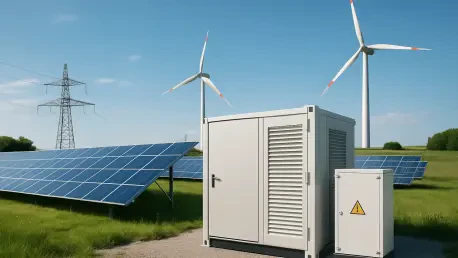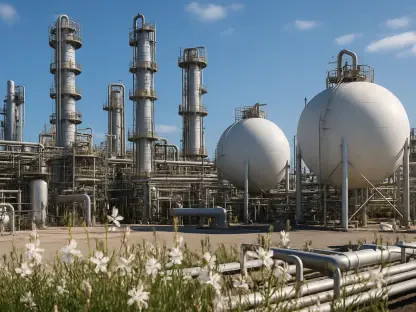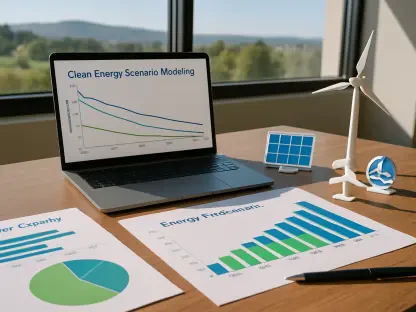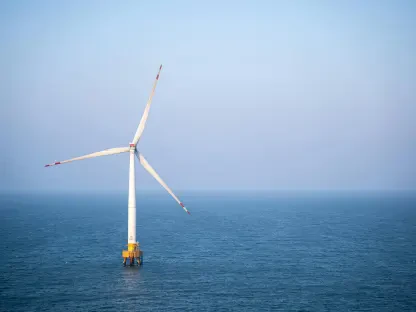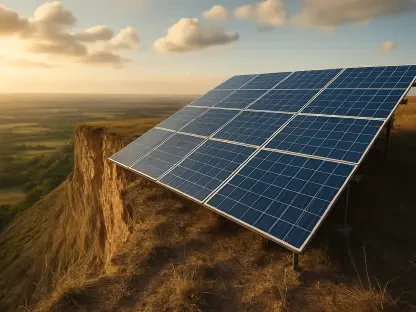Overview of Australia’s Renewable Energy Landscape and Snowy 2.0
Australia stands at a critical juncture in its energy journey, with renewable sources like wind and solar now contributing over 30% of the nation’s electricity generation, a remarkable shift from fossil fuel dominance just a decade ago, highlighting the urgent need for reliable storage. This rapid transition, driven by ambitious net-zero targets and global climate imperatives, underscores the pressing demand for innovative solutions to balance the intermittent nature of renewables and ensure grid stability as coal plants retire, creating a vital need for systems that can store excess power and release it during peak demand periods.
Enter Snowy 2.0, a landmark pumped storage project under Snowy Hydro, positioned as a cornerstone of this evolving energy landscape. Located in the Snowy Mountains, this initiative aims to provide 2.2 gigawatts of capacity and 350,000 megawatt-hours of storage, with the potential to power around 3 million homes for a week. It functions as a giant battery, pumping water uphill during surplus energy periods and releasing it to generate electricity when demand spikes, thus bridging the gap between renewable generation and consumption needs.
The significance of Snowy 2.0 extends beyond its scale, as it represents a strategic pivot toward long-duration storage, a critical component for Australia’s national grid. With key market players like Snowy Hydro leading the charge, alongside technological reliance on proven pumped hydro systems, the project underscores a broader industry trend of integrating large-scale storage with renewable energy. As Australia navigates this transition, Snowy 2.0 emerges as a vital asset among competing solutions, promising to redefine energy reliability for decades to come.
Current Status and Progress of Snowy 2.0
Project Milestones and Advances
As of early 2025, Snowy 2.0 has reached an impressive milestone, with construction progress reported at 67% completion. Following a strategic reset in recent years, the project has seen a significant uptick in delivery rates, reflecting a more streamlined approach to overcoming past delays. This advancement is driven by enhanced collaboration with the Future Generation Joint Venture, the principal contractor tasked with executing this massive undertaking, while maintaining a steadfast commitment to safety protocols.
Key targets remain in sight, with the first power generation anticipated within the next two to three years, and full completion scheduled for late 2028. This timeline reflects a concerted effort to recover from earlier setbacks, ensuring that each phase of construction aligns with broader energy goals. The focus on steady progress, even amid complex challenges, highlights the determination to deliver a project of national importance on schedule.
Safety remains paramount, with ongoing efforts to balance rapid advancement with rigorous oversight. The collaborative dynamic established in recent resets has proven instrumental in addressing disruptions, ensuring that milestones are met without compromising worker well-being. This balanced approach sets a precedent for how large-scale infrastructure projects can navigate the dual demands of efficiency and responsibility.
Performance Metrics and Outlook
Snowy 2.0’s capacity has been enhanced to a total of 2,200 megawatts, an increase of 200 megawatts since its initial planning stages, showcasing its growing potential to meet national energy demands. With an expected operational lifespan of 150 years, the project is built to endure, offering a long-term solution to Australia’s storage needs. This durability positions it as a foundational element of the country’s energy infrastructure for generations.
Looking ahead, projections indicate that Snowy 2.0 will fulfill over half of Australia’s long-duration storage requirements by mid-century, a critical factor in supporting a renewable-heavy grid. Its ability to store and dispatch energy on demand will be pivotal in smoothing out fluctuations inherent in wind and solar power. This forward-looking role underscores its importance within the national electricity market, where stability is increasingly paramount.
Performance indicators also reveal improved contractor dynamics, a direct result of strategic resets that prioritized communication and efficiency. These enhancements ensure that Snowy 2.0 is not only a technological marvel but also a model of adaptive project management. As it progresses, the initiative continues to solidify its standing as a linchpin in the broader push toward sustainable energy systems.
Challenges and Obstacles Facing Snowy 2.0
The path to completing Snowy 2.0 has not been without significant hurdles, chief among them being financial pressures that have escalated the project’s total cost to $12 billion as of the latest estimates. This substantial revision from earlier budgets reflects a combination of unforeseen expenses and systemic challenges that have impacted timelines. Addressing these cost overruns remains a priority, with ongoing efforts to reassess expenditures for greater transparency.
Operational difficulties further complicate the landscape, including unmet productivity targets and stoppages of tunnel boring machines due to challenging subsurface conditions like the Long Plain Fault Zone. Safety-related halts have also delayed progress, as have geological risks that require meticulous navigation to prevent structural issues. These setbacks highlight the inherent complexities of constructing in a rugged, unpredictable environment, necessitating innovative responses to keep the project on track.
Supply chain disruptions add another layer of difficulty, with rising costs for specialized components sourced internationally straining budgets. Broader infrastructure cost trends across Australia exacerbate these issues, reflecting a national challenge in managing large-scale projects. Potential solutions, such as deploying additional boring equipment and conducting independent cost validations, are under consideration to mitigate these pressures and ensure the project’s viability moving forward.
Regulatory and Environmental Considerations
Navigating the regulatory framework for Snowy 2.0 involves close coordination with the New South Wales government, which has approved necessary planning modifications to accommodate evolving project needs. These approvals are crucial for maintaining momentum, ensuring that construction aligns with legal and policy standards. Such oversight shapes the project’s trajectory, balancing development goals with public interest considerations.
Environmental and safety concerns also play a significant role, with geological variability and work stoppages impacting schedules. Protecting the surrounding ecosystem in the Snowy Mountains remains a priority, requiring careful mitigation strategies to minimize ecological disruption. These challenges underscore the delicate balance between advancing infrastructure and preserving natural landscapes, a dynamic that continues to influence project execution.
Compliance with stringent regulations demands transparency, particularly in cost reassessments and public reporting, fostering accountability among stakeholders. This regulatory scrutiny ensures that Snowy 2.0 adheres to sustainability objectives, aligning with Australia’s broader energy sector goals. The interplay of oversight and environmental responsibility will remain a defining factor in shaping the project’s long-term impact and acceptance.
Future Implications of Snowy 2.0 for Australia’s Energy Sector
Snowy 2.0 holds transformative potential for Australia’s grid, poised to enhance reliability by providing a robust buffer against the variability of renewable sources. By enabling a higher penetration of wind and solar energy, it supports the nation’s decarbonization ambitions, reducing reliance on traditional fossil fuels. This shift could redefine how energy is managed, ensuring consistent supply even during periods of low renewable output.
Emerging trends in energy storage technology further amplify the project’s relevance, positioning Australia as a frontrunner in pumped hydro solutions. As global interest in sustainable storage grows, Snowy 2.0 serves as a blueprint for integrating large-scale systems with renewable infrastructure. Its success could inspire similar initiatives worldwide, cementing Australia’s role as an innovator in the energy transition space.
Yet, external factors such as global supply chain volatility and economic conditions pose risks to such ambitious projects, potentially affecting timelines and costs. Despite these disruptors, growth areas like increased investment in renewable infrastructure signal a promising future. Snowy 2.0’s contribution to energy security over the next century and a half will likely anchor Australia’s position as a leader in sustainable power, driving both economic and environmental benefits.
Conclusion and Strategic Outlook
Reflecting on the journey of Snowy 2.0, the project stands as a beacon of innovation amid Australia’s push for a renewable energy future, despite facing formidable financial and operational challenges. Its progress, marked by a 67% completion rate in 2025, showcases resilience, while the revised $12 billion cost highlights the complexities of such endeavors. The strategic importance of this initiative in bolstering grid stability and supporting wind and solar integration remains undeniable throughout its development.
Moving forward, stakeholders must prioritize actionable measures, such as sustained transparency in cost management and rigorous safety protocols, to navigate remaining hurdles. Strategic investments in complementary renewable infrastructure should be accelerated to maximize Snowy 2.0’s impact. Additionally, fostering international collaboration on supply chain solutions could mitigate external risks, ensuring timely delivery of critical components. These steps, taken collectively, promise to cement the project’s legacy as a cornerstone of sustainable growth in Australia’s energy landscape.
